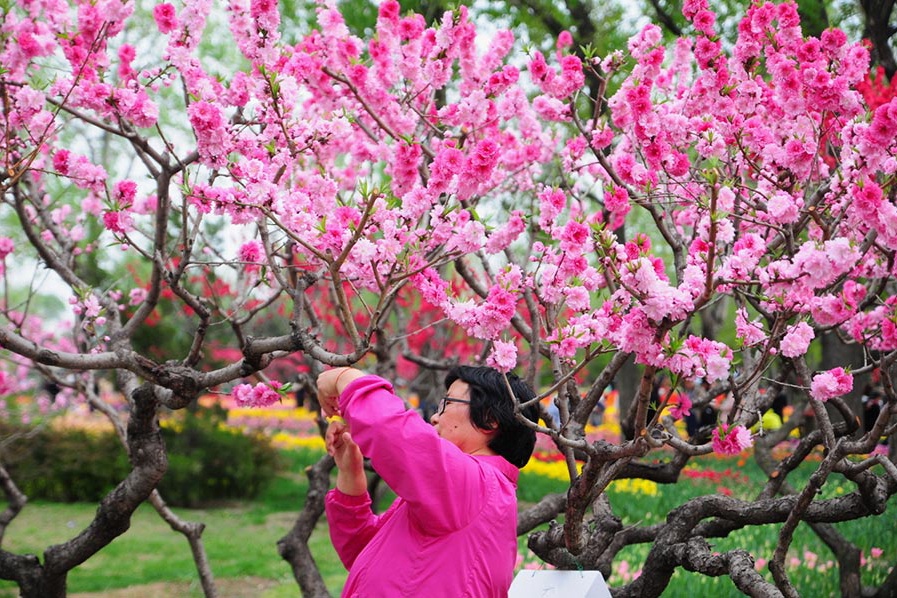
According to China's solar calendar, which comprises 24 solar terms, the Grain Rain period, or guyu, began on April 20. The solar term implies that there is increased rainfall during the period, which is good for the growth of grain. So, it is a good time to get out of the city and experience nature as the weather gets warmer and the view greener.
A good place for those in the capital to visit is the Beijing Botanical Garden.
Flowers in the garden are in full bloom over April and May.
The garden, located in Beijing's northwest, is at the foot of Fragrance Hill, or Xiangshan.
For those who prefer hiking, the mountain is just one bus stop further west.
The main entrance of the garden is the southeast gate.
There, I am overwhelmed by a "sea of tulips". Around 40,000 tulips covering 130 varieties are planted in the south of the park.
The tulips are in so many colors-pink, gold, violet-that I mistake a dark purple one for the mythical black tulip, "La Tulipe Noire".
The flowering of tulips in the garden starts in mid-April, and they can last till mid-May if the weather stays cool.
There is also a small lake in the park. Walk along its west bank, and you reach the peach garden.
The garden is a favorite spot for TV drama fans of Eternal Love, which was screened over January-March and featured many scenes involving peach blossoms.
The peach blossoms reflect the serial's Chinese name-Three Lives Three Worlds, Ten Miles of Peach Blossoms.
Though the visitors will not find 10 miles of peach blossom in the garden, there are plenty of them.
Among the blossoms, young girls, dressed in traditional costume similar to those worn by the actresses in the serial, pose against the trees filled with pink peach flowers.
Liu Jiahui, who has worked in the park for nearly 10 years, says that some late peach blossoms can be seen even in early May. But she adds that now is the best time to see crabapple blossoms and peony.
The botanical garden held an international seminar on crabapple over April 18-19, and around 80 botanists from home and abroad attended the event.
The garden organized a guided peony tour on April 25.
The peony, with its large multi-layered petals, was a favorite subject in Chinese poems, particularly in the Tang Dynasty (618-907), when poets praised it as a symbol of wealth and fortune.
If you should miss the flowers that blossom in spring, the Chinese rose is there for viewers from May until October.
In summer, the lotus, the water lily and other aquatic flowers cover the lake.
There is also a conservatory, which keeps plants in different environments at the center of the park, next to the peach garden.
My favorites in the greenhouse are orchids, plumeria, cactus, and carnivorous plants.
Apart from nature, the park also has treats for history buffs.
The memorial of Qing Dynasty (1644-1911) novelist Cao Xueqin is one worth visiting.
Cao is the author of A Dream of the Red Mansions, which is considered one of the four greatest Chinese classical novels. The memorial is near the east gate of the park.
There, one can see three old Chinese scholar trees, each believed to be more than 400 years old.
The site is believed to be Cao's former residence, where he wrote his masterpiece in the 1750s.



